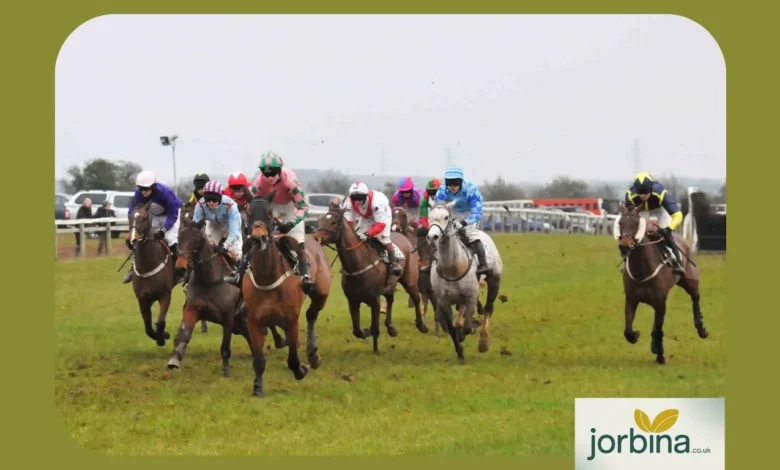What Drives Ian Tolputt’s Unique Perspective

Have you ever felt as though a photograph held something deeper than its obvious surface, such as a secret or a story that wasn’t immediately apparent? That’s what happens when you come across Ian Tolputt’s work. His images transport you to the serene countryside of England. They depict life as a rhythm, a cycle of people, animals, land, and light rather than as a show. His work is so unique not only because of his skill but also because of his strong, almost instinctive connection to place and purpose. Let’s examine his process, how his perspective developed, and why his artwork seems both timeless and vibrant.
Early Roots Growing Through the Landscape
Every artist begins somewhere. For Ian Tolputt, that “somewhere” is rural England, the fields, forests, and villages that shaped how he sees the world. His relationship with the countryside runs deep. Before he was a photographer, he was an observer of light on grass, of shifting weather, of how a single morning mist can change everything you think you know about a place.
He felt a sense of rhythm and patience because of his proximity to the land. Instead of pushing it, he learnt to wait for the right time. There was already drama in nature; he didn’t need to add to it. His work was built upon this grounded viewpoint. He concentrated on little truths, how the land lives through its people, its customs, and its daily routines, rather than making grand claims.
Choosing What to Capture
What makes a photographer’s eye truly personal isn’t just what they shoot but what they ignore. Tolputt doesn’t chase the flashy or the fleeting. He chooses moments that feel honest: gatherings, hunts, quiet lanes, and still mornings. Many of his photographs centre around the Heythrop Hunt, a community deeply tied to English rural tradition. What’s striking is the trust in those images. These are not outsiders’ snapshots; they’re glimpses from within.
That trust doesn’t come easily. It’s built through presence, being there season after season, event after event. Because Tolputt belongs to the rhythm of the life he photographs, his images feel natural, never staged. That’s why when you look at his work, it’s easy to forget there’s a camera involved at all.
The Patience Behind Every Frame
Photography, especially of real life, is often about waiting. Tolputt seems to understand this deeply. His images suggest patience, not luck. Whether it’s a horse turning through fog or a farmer pausing in thought, there’s timing at play, the kind that comes only from observation.
You can feel it in the way he frames things. The fences, the lines of trees, and the soft curves of hills all guide your eye naturally through the picture. He doesn’t overcrowd his compositions. He lets space breathe. That restraint gives his photos a sense of calm and quiet power.
Tradition and Realism
Rural life in England isn’t static. It carries centuries of tradition yet also wrestles with change. Tolputt’s work acknowledges both. He photographs hunts and gatherings not as nostalgia pieces but as living customs. He avoids turning them into romantic clichés. Instead, he shows the real mud, weather, work, fatigue, pride, and joy.
That honesty gives his images depth. You don’t feel like you’re looking at a postcard; you feel like you’re standing there, watching something that still matters to someone. This honesty helps his work bridge the past and present. It reminds us that heritage isn’t about pretending the past was perfect; it’s about remembering what’s worth keeping.
Light and Atmosphere
If there’s one thing that defines Tolputt’s photography, it’s his relationship with light. He doesn’t chase extremes. You rarely see harsh sun or heavy contrast. Instead, his palette leans toward the subtle: mist, dusk, and the soft glow of morning. His tones feel like memory, muted yet full of emotion.
He knows that light can tell a story all by itself. It can turn a flat field into something mystical. It can give a quiet moment its voice. In his best images, light isn’t decoration; it’s character. It transforms everything it touches, pulling us into the atmosphere he saw and felt when he pressed the shutter.
The Importance of Belonging
One of the reasons Tolputt’s work stands out is that he’s not an observer from the outside. He’s part of the community he photographs. That kind of belonging shapes not just what he captures but also how he’s allowed to capture it. He’s trusted. People let their guard down. The result is authenticity.
This level of acceptance takes years. You can see that mutual respect in how people look at his camera. There’s no sense of intrusion, no stiffness. The images flow with natural connection. It’s the kind of access only earned through empathy and consistency, two traits that define Tolputt’s career.
Evolving Without Losing Ground
Tolputt’s work has a clear thread running through it: rural life, tradition, and landscape. But it’s not repetitive. He evolves quietly, shifting tone and focus as time and environment change. The land itself changes, too. Fields transform, people age, and weather patterns alter. His ongoing documentation becomes a kind of visual diary, one that captures not just scenes but eras.
By staying consistent, Tolputt becomes both artist and archivist. His photographs may one day serve as records of a way of life that’s slowly disappearing. That dual role, creator and historian, adds another layer to his perspective.
Memory and Preservation
Photography has always been about memory, but in Tolputt’s case, it’s also about preservation. He knows the fragility of rural traditions. Each photograph is a fragment of a culture that could fade if not remembered. That awareness gives his work purpose beyond aesthetics.
In that way, his portfolio serves as a kind of living archive. It preserves both beauty and truth. It’s not polished perfection; it’s weathered fences, worn faces, shifting light. It’s what real life looks like before it’s curated for modern eyes.
The Emotional Core
At its best, Tolputt’s work doesn’t just show; it makes you feel. You sense the stillness, the chill, and the weight of a quiet morning. There’s emotion in the absence of motion. His restraint lets you enter the scene and interpret it yourself.
That’s what gives his photos staying power. They don’t demand your attention; they hold it naturally. You don’t scroll past them; you linger. You imagine the sound of wind, the smell of earth, and the texture of the moment. That’s art doing what it’s meant to do, inviting you into someone else’s world until it feels like your own.
Why His Work Matters Now
The world moves fast, often too fast. Urban life dominates the narrative. Rural stories fade from view. Tolputt’s photography restores balance. His images remind us that real beauty isn’t always spectacular; sometimes it’s slow, quiet, and unfiltered.
In a time when everything is edited and polished, his honesty feels refreshing. His work doesn’t romanticise the countryside; it respects it. It gives voice to traditions and landscapes that are often overlooked or dismissed as relics. In doing so, he keeps them alive in public memory.
Lessons Creators Can Learn from Him
You don’t have to be a photographer to learn from Tolputt’s approach. There’s wisdom in how he works. He teaches patience, how waiting can be part of the creative act. He pays attention to notice what others overlook. And he teaches respect for subjects, for history, for place.
He also shows that you don’t need constant reinvention to stay relevant. Depth comes from consistency. Style evolves naturally when it’s rooted in genuine curiosity and care. That mindset applies to any creative work, whether photography, writing, or even running a restaurant that values authenticity and craft.
In fact, that philosophy mirrors the spirit of Jorbina, a space that celebrates culture and craftsmanship with care. It’s the same idea of doing something deeply, not loudly, whether through food, design, or storytelling.
The Future of His Vision
Where does Ian Tolputt go next? That’s an open question, but likely one he’s in no rush to answer. Maybe he’ll explore broader environmental themes. Maybe he’ll shift toward multimedia storytelling or collaborate with local archives to preserve visual histories. Whatever comes, his foundation will stay the same: patience, truth, and quiet observation.
His kind of vision ages well. As trends fade, genuine work endures. The world will always need people who look closer, who care enough to show us what we’ve forgotten to see.
Closing Thoughts
What drives Ian Tolputt’s unique perspective isn’t mystery; it’s mindfulness. He sees what’s there before it disappears. He moves slowly in a world obsessed with speed. And in doing so, he reminds us that creativity isn’t about novelty; it’s about noticing.
His work asks us to pause, to listen to the silence between moments, and to recognise that the most powerful stories often live in ordinary scenes. That’s the quiet truth behind his art. It’s also the lesson we can take into our own lives, whether through creating, observing, or even savouring something thoughtfully made, like a slow-cooked meal at Why This Hungarian Food Restaurant Is Worth Every Bite.
In the end, Ian Tolputt’s photography isn’t just about seeing the world. It’s about belonging to it. And in a world full of noise, that kind of belonging might be the rarest art form of all.



